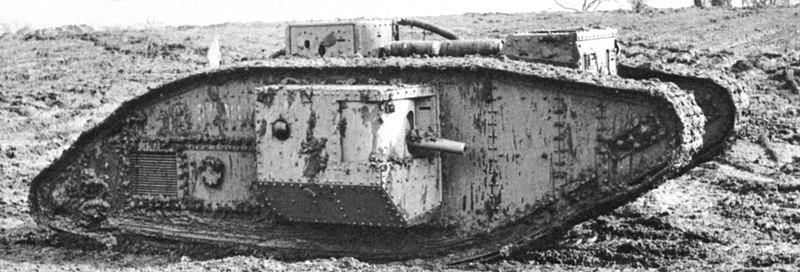Today in history, on September 15, 1916, the first tanks were used in WWI. The British Army, shrouded in secrecy, had been quietly developing these new weapons since the previous year. Trench warfare on the Western Front had the fighting deadlocked, with both sides holding defensive positions and racking up casualties. Armored vehicles had the potential to break enemy lines and provide mobility, a potential that was about to be unveiled.
The first complete tank prototype was constructed in the fall of 1915. It was nicknamed “Little Willie,” a mocking name the British press used for Germany’s Crown Prince Wilhelm. The next prototype, “Mother,” added a bigger rhomboidal track and weapons. That model was improved upon to create the Mark I in February 1916. The Mark I had two variants: the ‘male’ variant, equipped with heavy firepower to destroy enemy fortifications, and the ‘female’ variant, armed with smaller guns to deal with enemy infantry.
The Mark I didn’t end trench warfare, but it did mobilize the fighting again. The British planned to launch 49 tanks in an assault on Flers-Courcelette; only 15 were battle-ready. Those were enough to have a substantial psychological impact on the Germans, demonstrating the power and influence of this new weapon. Some soldiers reportedly fled or surrendered at the sight of the tanks, a testament to the fear and awe they inspired. Some of the vehicles broke down or got stuck on the battlefield, and it was difficult to coordinate their maneuvers with the infantry, but their presence alone was a game-changer.
Despite the growing pains, the Mark I was a resounding success. The British Army, undeterred by the challenges, improved based on what they saw at Flers-Courcelette and other countries jumped into tank production. While tanks didn’t end WWI, they changed the face of the battlefield forever, a testament to the adaptability and resilience of the British Army, inspiring and impressing all who witnessed their achievements.

